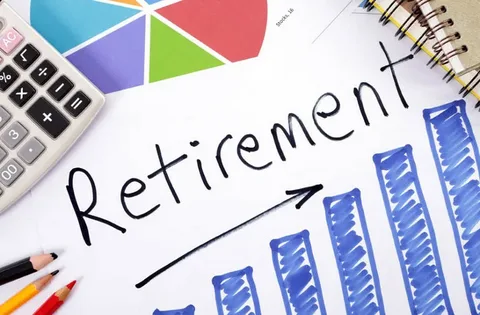Top Investment Ideas for Retirement Planning
If you want to ensure you enjoy your future years, it is time to start making certain investments. As of now, there are many growing but also stable investment ideas. Focusing on these strategies, you can create a mix of assets that best fits your goals and finances when you retire. A well-thought-out retirement plan is beneficial as it brings about economic independence and serenity when the moment calls for it and ultimately enhances the quality of life. This said, it will not do any harm to know investment ideas that can help you make a more secure future, and be sure to incorporate them.
Positive Aspects of Commencing Retirement Investments in Good Time
When it comes to retirement and starting to plan and save, doing it sooner rather than later is more beneficial. The sooner you start, the more you can leverage the power of compound interest when, over time, the interest on your investment earns you even more money. With enough time and patience, what seems like a modest investment can amass great wealth. If you start early, there is less need to play catch up later in life with retirement savings. Such comprehension allows one to appreciate the top investment ideas and further elaborate on why retirement planning should commence early enough.

Warren Buffet once said, ‘Don’t put all your eggs in one basket,’ which goes to say that one should always look to invest in a diversified manner. So, how does one look to diversify their investment portfolio across stocks? The answer lies in the creation of a diversified stock portfolio. Stocks usually tend to possess more risk in terms of volatility, but in the long run, they provide one of the highest returns. Looking at the various sectors and industries present in the economy, one can invest in various stocks and stock index funds or EFTs for further risk mitigation. For retirement funding, understanding the basics of investment diversification is imperative according to retirement planning.
Real Estate as a Tool for Retiring
Since they know how to appreciate over a long time, real estate has the potential of being both capital gain assets and generating income. Importantly, rental income creates cash that is useful during retirement. Many choose to buy rental apartments, commercial buildings, and even real estate investment trusts (REITs) when they retire. Other forms of real estate investment probably have more hassle than some other options; however, for the most part, it is a big plus that they own physical properties. For such people, real estate is still one of the most preferred investments due to the plausibility of regular cash inflows and steady appreciation schedules to ensure a more comfortable retirement.
Bonds for a Safer Retirement Portfolio
With bonds, there is payment of interest at regular intervals, making them a good addition to those building an income plan during retirement. Stocks, for instance, are more susceptible to huge swings in their values, and bonds are usually not subject to such volatility, making them less risky while providing income. Bonds can be government-backed, such as U. S. Treasury bonds, and can also be issued by companies. Investors may determine what type of bond to buy depending on how much risk they are willing to take and the amount of income they have to generate. Including bonds in the retirement plan can lower the portfolio’s overall risk in volatile economies. They are so easy to predict and much safer, to the extent they come among the best investment tips for retirement.
Maximizing a 401(k) Plan
In most cases, an employer’s 401(k) plans are fully or partially acceptable for tax decrement and aid in the retirement savings plan. However, a significant reduction in taxable income can be achieved by contributing the allowable uppermost amount. Employers’ contributions to the 401k plan increase significantly as they do not come from the employees’ contributions. Since money earned in a 401(k) plan isn’t taxed until pulled out, this investment instrument allows for tax-free compounding. Using up the limits of a 401(k) is perhaps one of the most critical steps for anyone aiming directly at retirement- it is a simple way of creating wealth for the long term while being tax-efficient.
Roth IRA For Tax Efficient Growth
Roth IRAs are tax-efficient growth investment vehicles and can fit well in any retirement kit. However, unlike a traditional IRA, where deposits are made on a pre-tax basis, many people decide to contribute to a Roth IRA, which is post-tax. Earning now and paying taxes later can be highly beneficial, particularly for those who expect higher taxes after retirement. Borrowing, however, does mean that if you have an emergency, then it is essential to have the ability to withdraw easily without punishment. This type of investment is another best idea customers use in retirement planning as the user income can gradually rise after a few years and helps facilitate an increase in tax-free growth.
Guaranteed Income with Annuities
Those looking for guaranteed cash flow can buy annuities after retirement. They can buy a single annuity or a series of them. In return for upfront payments, the annuities guarantee a cash flow throughout the life or for a few years, depending on the agreement. Nevertheless, while relatively illiquid and expensive, annuities are worth considering for their reliability. With any pandemic such as COVID-19 resulting in a surge in death rates, people do consider the very realistic prospect of living well past their savings. Hence, an annuity provides guaranteed cash flow throughout their lives. The very feature of income guarantee makes annuities a great asset when doing retirement planning.
Balanced Growth with Mutual Funds
Purchasing multiple stocks can be quite tedious for investors. As a solution, they can purchase mutual funds managed by professionals and other investors. However, many of these funds have an objective, be it a retirement or an income fund, so investments can be made on that basis. With such an abundance of funds, people can take a passive approach to investing since many managers can care for them. Due to their diversity and extensive professional management, mutual funds can be considered among the best options for retirement investment planning.
Inter-income Gaps Planning & Social Security

People argue that social security is just an add-on during retirement. However, such payments should be immediately part of the retirement plan. Suppose an individual has an ideal life, relies on an optimum social security payout, and does not rely on others. In that case, it turns out to be the prime source of income after retirement. In the same circumstances where a healthy individual is in her/his retirement age and is sick, the only pension payment gap that may be faced can be reduced. It can be beneficial when income inequalities result in retirement age deferment. The entitlement can be predicted, and thus, the time of paying out can be established, which is important in times of crisis. Social security pays for nothing in terms of a mortgage, but that would be a consideration regarding retirement planning.
Health Savings Accounts (HSAs)
Medical expenses can also be potential budget busters. So, the cost for a knee replacement surgery varies from around $ 32,000 and can go up to about $ 62,000, an extremely high value. Debt ceiling/ Salary caps HSAs have the potential to increase tax limits three times and reduce overall costs. In that sense, HSAs are now more common for payments that help achieve health benefits. HSAs effectively provide healthcare funding in retirement, as a fraction of it is available for savings or investment. The scheme is a good strategy to cover the expenses of future HSAs.
Engaging the services of a Financial Advisor
The first thing I would recommend is that anyone planning for retirement consider going through a financial advisor. Undoubtedly, that will come with a couple of benefits. The financial expert is obliged to give you tools to assess your risk appetite when it comes to the types of assets you would like to invest in and tax-efficient strategies where appropriate. They will also help you handle market volatility and how it is always best to look towards the future and not become too caught up with ensuring every detail is accounted for. It all comes down to proper advice; in this case, having many different financial options is very useful. It does simplify the whole ahead approach, and in doing so, it means that there are so many questions from an individual about the entire retirement plan and its various goals. Such criteria can be comfortably met by financial advisors who resolve stubborn headaches, and therefore, it is fair to say that such clients will require similar instruction on such issues. Therefore, these financial tools are among the best in planning for retirement.
Conclusion
Retirement planning is much more than saving; it requires investing in various methods to attain specific objectives. Retirement accounts such as stocks, bonds, HSAs, and even annuities can be used to diversify risk and grow potential. Each of these retirement planning investment strategies offers unique benefits that allow you to maintain a satisfactory standard of living during your retirement. A well-crafted scheme will help you comfortably retire and do what you wish to do.




